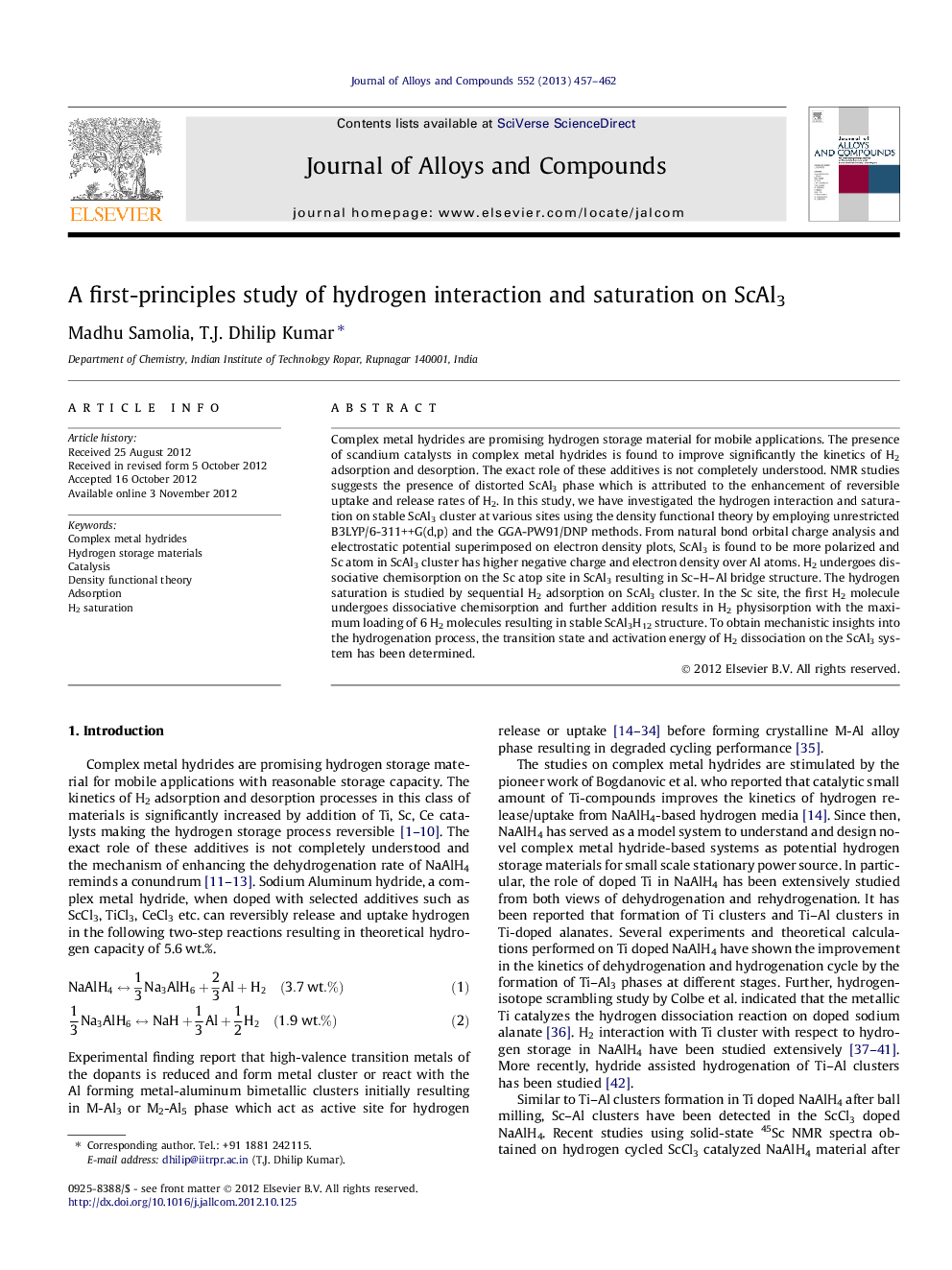| Article ID | Journal | Published Year | Pages | File Type |
|---|---|---|---|---|
| 1614855 | Journal of Alloys and Compounds | 2013 | 6 Pages |
Complex metal hydrides are promising hydrogen storage material for mobile applications. The presence of scandium catalysts in complex metal hydrides is found to improve significantly the kinetics of H2 adsorption and desorption. The exact role of these additives is not completely understood. NMR studies suggests the presence of distorted ScAl3 phase which is attributed to the enhancement of reversible uptake and release rates of H2. In this study, we have investigated the hydrogen interaction and saturation on stable ScAl3 cluster at various sites using the density functional theory by employing unrestricted B3LYP/6-311++G(d,p) and the GGA-PW91/DNP methods. From natural bond orbital charge analysis and electrostatic potential superimposed on electron density plots, ScAl3 is found to be more polarized and Sc atom in ScAl3 cluster has higher negative charge and electron density over Al atoms. H2 undergoes dissociative chemisorption on the Sc atop site in ScAl3 resulting in Sc–H–Al bridge structure. The hydrogen saturation is studied by sequential H2 adsorption on ScAl3 cluster. In the Sc site, the first H2 molecule undergoes dissociative chemisorption and further addition results in H2 physisorption with the maximum loading of 6 H2 molecules resulting in stable ScAl3H12 structure. To obtain mechanistic insights into the hydrogenation process, the transition state and activation energy of H2 dissociation on the ScAl3 system has been determined.
Graphical abstractElectrostatic potential superimposed on electron density of H2, Al4 and ScAI3.Figure optionsDownload full-size imageDownload as PowerPoint slideHighlights► A first principles calculation on hydrogen interaction and saturation on stable ScAl3 cluster is performed. ► Sc atom has higher negative charge electron density over Al atom in ScAl3 from natural bond orbital charge analysis. ► H2 undergoes dissociative chemisorption on the Sc atop site resulting in Sc–H–AI bridge bond. ► H2 saturation on Sc site results initially in chemisorption and then physisorption with the maximum loading of 6 molecules resulting in stable ScAl3H12 structure.
